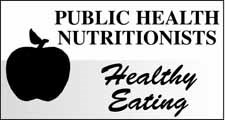Yogurt is one of the few foods that have been around since ancient times. Most food historians agree that yogurt and other fermented milk products were accidently discovered by people living in Central Asia about 6000 years ago. Warm temperatures and the presence of bacteria in the milk resulted in a product that lasted longer than fresh milk. It became a dietary staple known as yogurt. It was popular in ancient Greece, Egypt and Rome. Yogurt made its way from Turkey to Iran and then on to India where it is still an important food.
Turkish immigrants are believed to have brought yogurt to North America in the late 1700s. But it wasn't until the 1940s that yogurt became popular in the United States. It was first marketed to southern European immigrants. When the Danone factory in New York began adding strawberry jam to yogurt, demand really increased. In the 50s and 60s it was known as a health food and became associated with "hippies". Today there is more shelf space devoted to yogurt than any other single dairy product.
All yogurts in Canada are made by fermenting milk with Lactobacillus bulgaricus and Streptococcus thermophilus. These probiotics, or good bacteria, convert milk sugar (lactose) into lactic acid which gives yogurt its tangy flavour. It is thought that the live bacteria present in yogurt rebalance the bacteria naturally present in the large intestine, thus improving digestive health. However, more research is needed to determine the percentage of bacteria that can survive the strong acid of the stomach and then the bile salts of the small intestine and actually make it to the large intestine.
Yogurt is no longer simply plain fermented milk. It has undergone a complete make over. It now comes in a wide range of flavours, has added sugar, thickeners, plant sterols, additional strains of bacteria, fibre, inulin, omega-3 fatty acids and antioxidants. It has become the 21st century health food. Claims for yogurt range include improving bowel habits, preventing colds, lowering blood pressure and cholesterol and strengthening the immune system.
There is no question that plain yogurt is a healthy food.It is a good source of calcium, protein, potassium and B vitamins - especially vitamin B12. But whether it lives up to its status as super food is a little less clear. In most cases there simply isn't enough evidence to support all the health claims for yogurts with added strains of bacteria, inulin or antioxidants.
When shopping for yogurt, choose a low-fat variety. Buy plain yogurt and then add fresh fruit. Fruit or other flavoured and frozen yogurts can have an additional 4 to 7 teaspoons of sugar per 1 cup serving. The expiry date indicates the date that a minimum number of live bacteria are guaranteed to survive. The bottom line is that if you like yogurt, choose it as a serving of Milk and Alternatives, not because of any medical claims.
Written by the Public Health Nutritionists of Saskatchewan and supported by Public Health, SunriseHealth Region.
If you have any comments or questions please contact: Heather Torrie, Public Health Nutritionist, Sunrise Health Region, 150 Independent Street, Yorkton, Sask.S3N 0S7 or phone: 786-0600.




